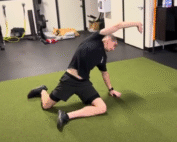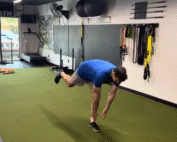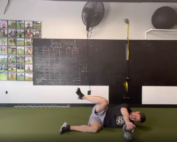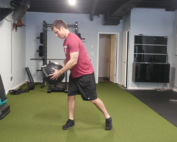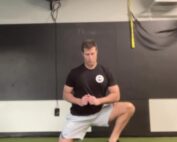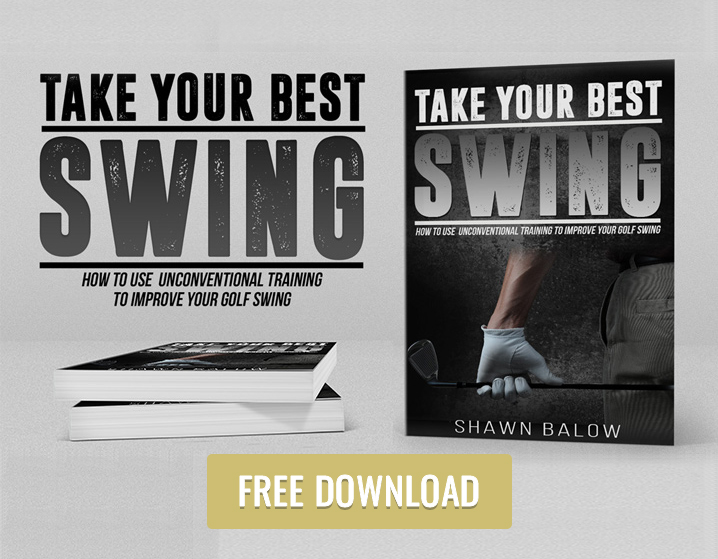Four Stretches You Should Do Before You Hit the Links
Early tee times are a common occurance for a significant portion of golfers. If you like to hit your first drive as the sun comes up, you may not be leaving yourself enough time to warmup. Not warming up before you play 18 can increase the likelyhood of muscle soreness, joint fatigue and/or injury.
Your golf swing requires multiple muscle groups and joints moving both simultaneously and independently. That means increasing range of motion through stretching and mobility movements is crucial. Below are 4 movements you should perform before your next round to make every swing smooth & pain free.
Shoulder CARs
Moving your joints, including the shoulder, through their full range of motion is pivotal to keeping them healthy. Controlled articular rotations, better know as CARs, requires you to move your shoulder in multiple planes of motion, as does the golf swing. Every golfer knows that a shoulder injury can put their golf game on hold for a significant amount of time.
To perform a CAR, stand with feet hip width apart and hands by your side. Slowly raise one arm in front of your body with your palm facing your ear. Once you reach your anterior end range, slowly turn your palm away from your ear and continue rotating your arm to your posterior end range. Reverse direction of the rotation and return the hand to the starting position. Make sure you keep your shoulder girdle in line with your hips.
Mountain Climber to Child’s Pose
One of the top “complaints” trainers hear from clients is tight hamstrings. Overactive hamstrings can be a common ailment, but stretching them isn’t the only solution. Increasing mobility & flexibility in the posterior chain (e.g. hips, glutes, lower back) may reduce the amount of hamstring tightness. Golfers need to possess mobility and flexibility in their posterior chain in order make quality golf swings.
The mountain climber to child’s pose is a movement that increases both mobility and flexibility. To perform this movement, setup in a arm extended plank. Step your right foot outside your right hand, press your right foot into the floor, drop your hips slightly and maintain a straight left leg. Put your right foot back, separate your knees, push your butt to your heels and bring your head & chest to the floor. Repeat the same process on your left side.
Open Book
Maintaining a certain level of thoracic spine (e.g. t-spine) mobility is necessary for reducing back pain. It’s also necessary for creating an efficient golf swing. Increasing the amount of rotation in the t-spine, while minimizing the amount of rotation in the lumbar spine, can translate to more power and less pain.
The side-lying open book stretch is great for increasing t-spine range of motion while stretching the lower back. Start by laying on your right side and pull you knees up to waist level. Use your right hand to keep your knees pinched together and place your left hand on your left ear. Rotate your t-spine and attempt to place your left elbow on the ground behind your left shoulder. Repeat the same process on your left side.
Mobility Stick Slap Shot
The side lying open book is a great way for everyone to increase t-spine mobility. However, there is another t-spine movement that is more appropriate for increasing golfers t-spine mobility. The Stick Mobility slap shot requires individuals to rotate their t-spine from the hinge position, which is what you do when you swing a golf club.
Start off your stick mobility slap shot by performing a good body weight hinge and placing the stick across your back. Rotate your t-spine until the left side of the stick is on the ground near your left foot. Hold this position for 5-10 seconds then rotate your t-spine to the right until the stick is on the ground near your right foot. Repeat the sequence 5-10 times on each side.
If you don’t have access to mobility sticks, contact us to schedule your FREE intro workout and movement assessment. We also offer TPI assessments and golf fitness training programs for anyone looking to take their game to the next level.


